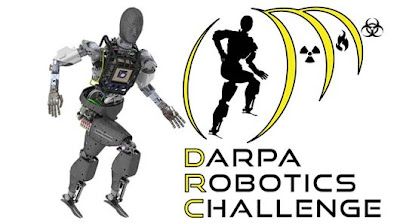MILITARY NANOTECHNOLOGY
Scientists at
the Indian Institute of Science as well as defense research organizations are
working on understanding the impacts of Nano-technologies in military
application in coming years. While Nano-technologies can provide enormous
benefits, it can also be used by the militaries of the world in creating
weapons of mass destruction that we cannot even imagine with a conventional
mind set.
Armies throughout world are looking for a 21st century
battlesuit . The clothing must stop bullets, detect chemical,biological agents,
monitor a wounded soldier’s vital signs,administer basic first aid, and
communicate with Headquarters. NT produces stronger, less weight
material which is ideal for military applications .
Nano-materials enable the following material functionalities
in uniforms and equipment to make them stronger and
lighter could lead to nanofiber-like materials that break off from
uniforms and equipment and enter the body and environment
- First, nano-materials massively damage the lungs. Ultra
fine particles from diesel machines, power plants and incinerators can
cause considerable damage to human lungs. This is both because of their
size (as they can get deep into the lungs) and also because they carry
other chemicals including metals and hydrocarbons in with them.
- Second, nano-particles can get into the body through the
skin, lungs and digestive system. This may help create free radicals that
can cause cell damage. There is also concern that once nano-particles are
in the bloodstream, they will be able to cross the blood-brain barrier.
- Third, the human body has developed a tolerance to most
naturally occurring elements and molecules that it has contact with. It
has no natural immunity to new substances and is more likely to find them
toxic.
- Fourth, the most dangerous Nano-application use for
military purposes is the Nano-bomb that contain engineered self
multiplying deadly viruses that can continue to wipe out a community,
country or even a civilization.
Nanotechnology in Body Armour
Improved body armour is a major focus for military
nanotechnology research. Several different technologies have been explored,
some of which will be operational in just a few years time:
Whilst the potential applications are basically unlimited, some
potential military applications of nanotechnology are already quite advanced,
and will come into play much sooner than others. One example of this is sensors
- many sensors have already been developed which take advantage of the unique
properties of nanomaterials to become smaller and more sensitive, compared
to conventional technology. Portable, efficient sensors will be highly valuable
to military field operatives, for example:
·
Highly sensitive infrared thermal sensors
·
Small, lightweight accelerometers and GPS for motion and
position sensing
·
Miniature high performance camera systems
·
Biochemical sensors
·
·
Filter
·
Nano materials used in filters to remove selected impurities
from fluids could become very low in cost and henceubiquitous, and result in
many small but discrete concentrations of possibly toxic impurities. “Argonide
Nanomaterials” filters can be used in war where water contamination is biggest
threat.
APPLICATIONS UNDER DEVELOPMENT
Body Armor made of CNT is 117 times stronger
than steel,these can be used for bullet proof, helmets and safety device bullet-proof
vests are basically made from high stiffness and toughness, woven or
laminated, polymeric fibers stacked in a number of layers. Upon impact of
the striking bullet, the fabric material absorbs the energy by stretching
of the fibers and the stiff fibers ensure that the load is dispersed over
a large area throughout the material. CNT is an ideal candidate material
for bullet proof vests due to its unique combination of exceptionally
high elastic modulus and high yield strain.
Primitive NBC suit reduces solider capability because it
can’t pass air. NT in cloths non woven composite fabrics can be made
25% lighter and stronger than current woven military uniform fabrics. In
addition, they can be made to exhibit over three times the air
permeability or breath ability of the current woven military uniform
fabrics. Uniform fabric will offer enhanced abrasion resistance, develop a
fire and chemical/biological resistant fabric and offer
combination water repellent/moisture absorbent composite
fabric.Nano-silver socks/undergarments will remain hygienic for days in
war scenario, where it is impossible to change undergarments.
NT enable food will last more without getting rotten,
these foods are ideal for war where supply of food is difficult.
Nano-Silver packed food withstand days together without damage. These foods can
be used in disaster recovery teams, in war and hash areas like very high
altitude areas where fresh food is a difficulty.
CONCLUSION
.jpg)
NT is multidisciplinary; it is used for improving
existing technologies and exploring new compounds. Using NT to create
materials with properties that will revolutionize military technology,
from processors to display screens and body armor to air filters. This is
a beginning and still lot to do,however there are potential
applications in military technology. A future of nano-dust spies,
sentinels, and defensive weapons, is one that most of the world's
military specialists are unprepared .Yet most of these weapons are
far closer and easier to devise and build, than the molecular nano
assembler, the horn of plenty that most people think of when they think of
a future NT.Nano-weapons combined with bio/chemical and genetic weapons; provide
the budding world religious or ideological dictator with far more ultimate
power than a few nuclear weapons. Every measure has a counter-measure. But
not everyone will have the resources to obtain counter-measures, when
the means of deadly attack becomes nearly ubiquitous.


.jpg)
.jpg)

.jpg)